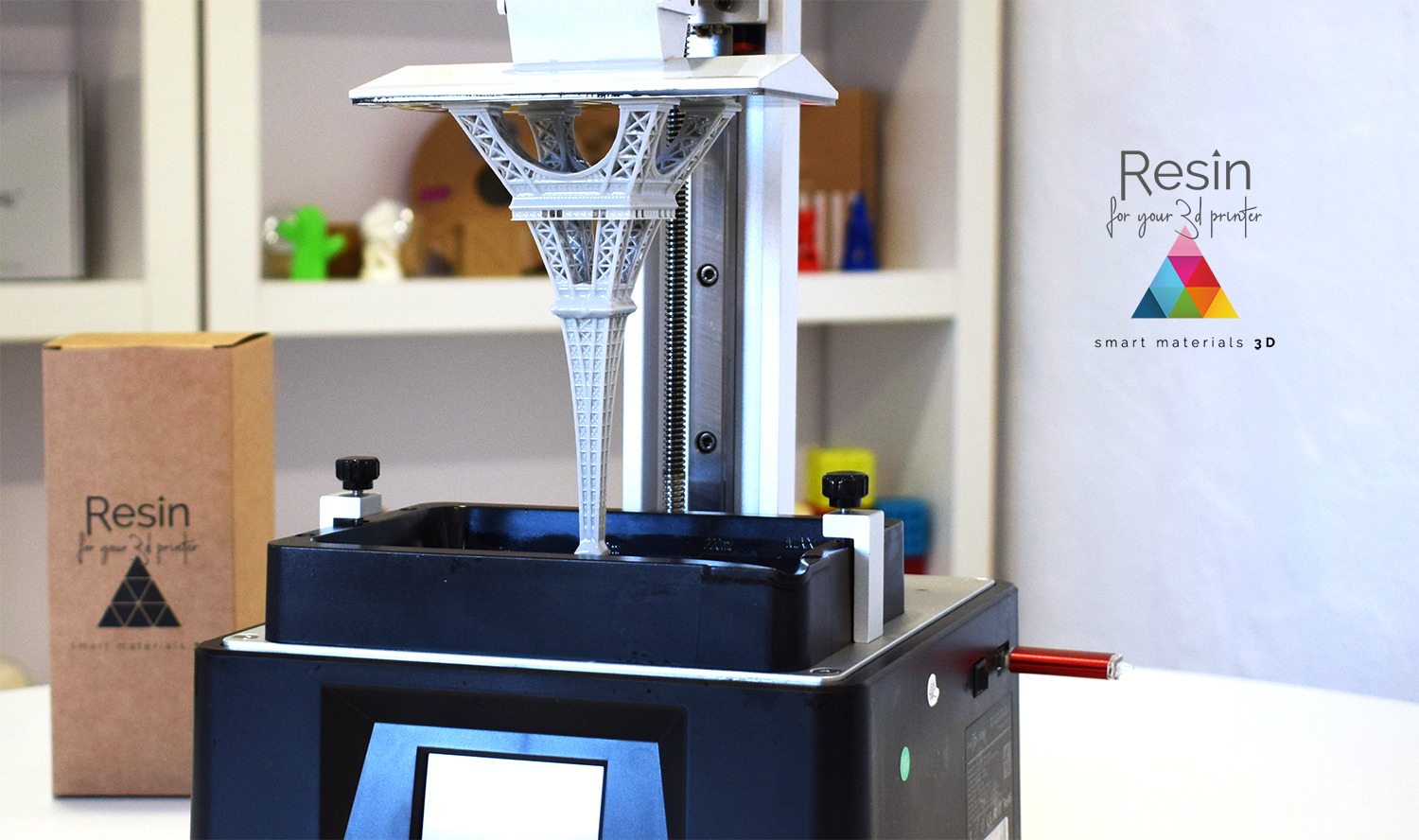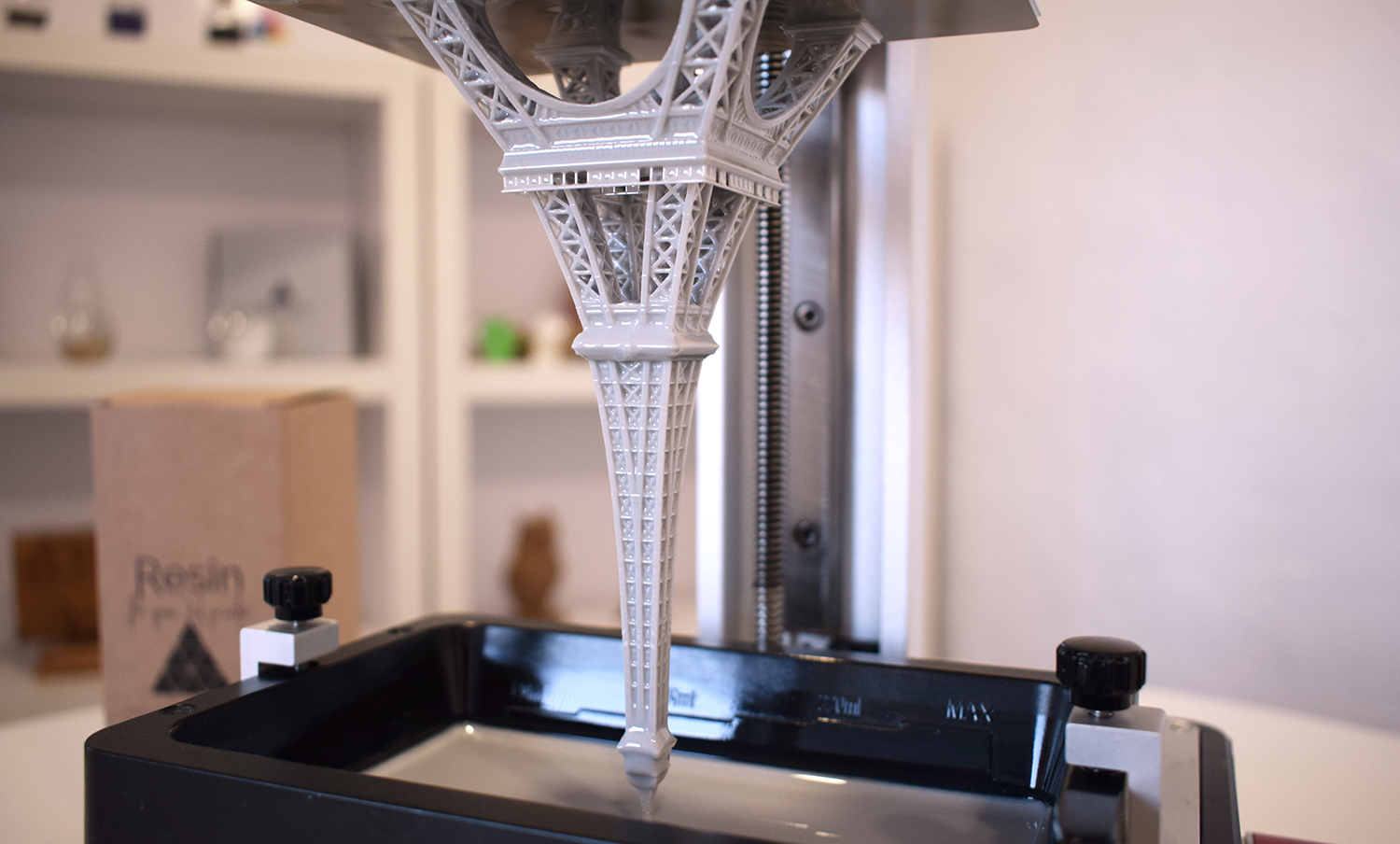- Sin categorizar
- 0 likes
- 4336 vues
- 0 commentaires

1- Shake well before using
We know it sounds cliché, but when it comes to resins, this step is critical in order to achieve optimal material behavior. Shaking the resin is crucial because, after a long period of inactivity, the resins tend to separate their multiple components, which could result in a failed print.
As a result, the best form is to gently turn the container over to avoid internal bubbles while also ensuring that the container is completely closed to prevent spills.
2. Temperature regulation
The photosensitive resin must be applied at a temperature of at least 20 °C; it also needs to be sufficiently viscous to adhere to the printing base.
You can use a variety of techniques to achieve this:
- Submerge the resin container in a water bath for a few minutes.
- Place the resin-filled tray on an FDM printer's hot bed for a few minutes at a temperature of about 40 °C.
- Heat the printer or the area where the resin will be applied, which is especially advised during the winter months.
Once the resin has been tempered, you can begin printing with it, and the printer, with its LCD screen, projector, or laser, will maintain a consistent working temperature.
3. Keeping the printed parts clean
How the pieces are washed after resin printing makes a difference; there are two kinds of resins: those for washing with water and those for washing with isopropyl alcohol.
In both situations, it must be washed in a specific container; VERY IMPORTANT NOTE: never wash in water under the faucet because the cleaning residue must ALWAYS be cured before being thrown away.
There are currently washing machines that stir the water or alcohol and set the alarm for the desired amount of time.

4- Cured
After the previous step, it is very important to cure our previously clean and dry pieces of resin remains.
As mentioned in the previous step, washing, and curing machines are extremely useful because they are specifically designed for this purpose. Depending on the resin used, certain curing times are recommended.
5- Care and upkeep
Printers using VAT technology require ongoing maintenance because photosensitive resin residues can harden or adhere to the printer's multiple surfaces, particularly the FEP sheet.
As a result, after each impression, a plastic spatula should be passed through the tray to ensure that there are no remains of supports or failed impressions.
If it is to be printed again in the following hours or days, the resin must be moved with said spatula so that its components are well mixed, but if it is not to be used for a long time, the remaining resin must be filtered and kept in addition to washing. Remove the printer tray until the FEP sheet is completely clean.
It is not recommended to manipulate the sheet too much with paper or rags for cleaning as this can cause scratches and loss of transparency, resulting in a lack of definition in the printed pieces in subsequent prints.
You can get perfect prints at any time of year by following these 5 simple steps. It is important to remember that when using photosensitive resins, we must follow precautions such as wearing disposable gloves, wearing a mask, and wearing protective glasses.
These safeguards are required because contact with skin or mucous membranes is strictly prohibited, as is adequate ventilation in the workplace.
So, what are you waiting for? Start printing those objects with the high definition and superb finish that only a material as versatile as Smart Materials 3D resins can provide.







Commentaires (0)